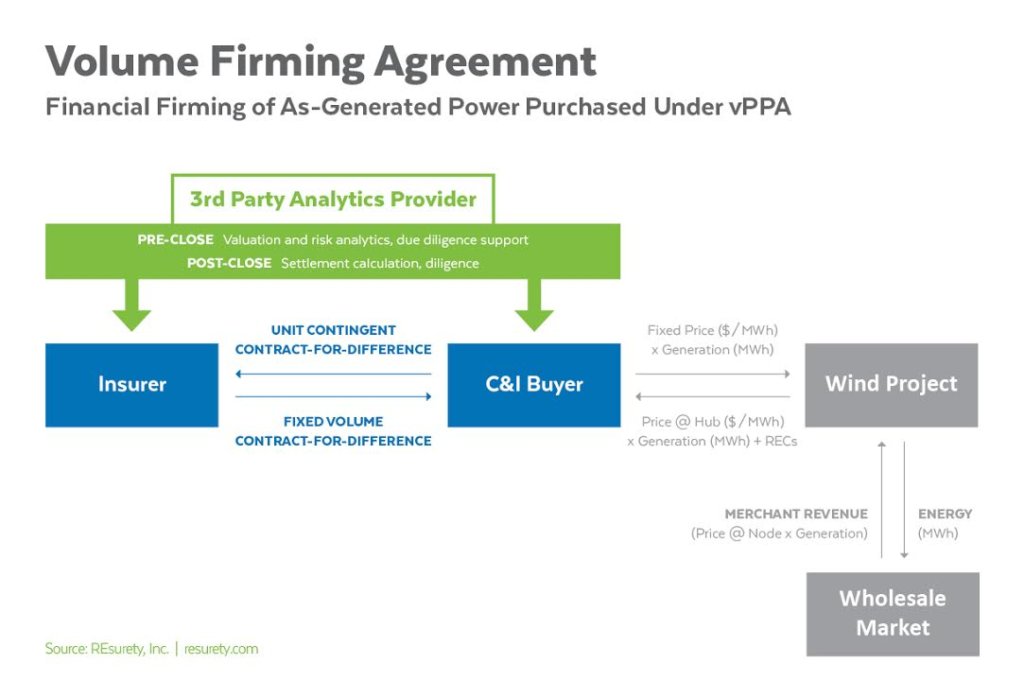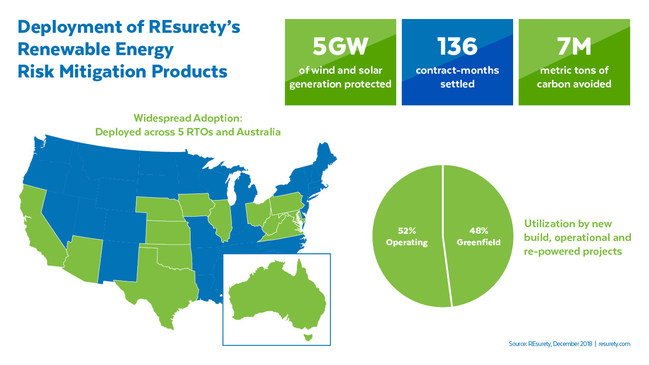
The two environmental technology organizations plan to greatly increase the availability of data that enables an impact-based approach to carbon accounting and decision making.

Contact:
Tara Bartley, [email protected]
Nikki Arnone, [email protected]
Boston, Mass. and Oakland, Calif. – January 10, 2023 – REsurety, Inc., a leading analytics company empowering the clean energy economy, and WattTime, an environmental tech nonprofit working to multiply positive climate impact, have today announced that both organizations plan to increase the availability of high-quality marginal emissions data. These data can support impact-based decision making and more accurate carbon accounting for climate-conscious corporations and other institutions that have committed to net-zero and science-based targets. REsurety and WattTime are collaborating to make this critical data available at no cost to qualified end users.
“We’ve heard the growing calls from the private sector for stronger climate action, which have emphasized the urgent need for access to transparent emissions data. As mission-driven organizations in this space, we feel it’s our responsibility to take meaningful action,” said Lee Taylor, CEO of REsurety.
On December 13, 2022, a group of leading global corporations and investors, including Akamai Technologies, Amazon, General Motors, Hannon Armstrong, Heineken, Intel, Meta, Rivian, Salesforce, and Workday, launched the Emissions First Partnership, calling for a shift in corporate carbon accounting standards away from megawatt-hour matching and toward an emissions impact-centric system. Their proposed principles for electricity accounting focus on maximizing greenhouse gas reductions. Marginal emissions data, which measures the carbon impact of consuming or generating energy at a given time and location, is a critical tool for maximizing and accurately measuring real-world carbon impacts.
“This year saw an extraordinary surge in the number of companies intentionally optimizing electricity use and renewable energy generation to slash emissions — an urgently needed climate trend that’s making a real difference,” said Gavin McCormick, founder and executive director of WattTime. “We and REsurety strongly agreed it’s important to share access to open, transparent, validated data from around the world that will empower organizations to more easily track and execute on emissions reduction goals.”
REsurety and WattTime will make historical marginal emissions data available to qualified end users including researchers, corporate sustainability practitioners for accounting, and other non-commercial end users at no cost within the next three months. This improves on the temporal and spatial granularity of the global annual country-level marginal emissions data already available from the UNFCCC.
Furthermore, the two organizations have committed to expanding the geographies covered by their high-quality marginal emissions data. Increased data coverage will enable the standardization of reporting and analytical frameworks, data integrations, and usage patterns for companies within the U.S. and around the world. By the end of 2023, REsurety will provide nodal marginal emissions data across all U.S. wholesale markets and WattTime will expand global data coverage to include parts of two or more additional continents.
“Salesforce has been procuring clean energy since 2013, and last year reached 100% renewable energy for its global operations. But we’ve also seen first hand that not all projects deliver the same impact. By shifting the focus from megawatt-hour matching to emissions reductions, we can focus on maximizing decarbonization impact in the regions where the world needs it the most. High-quality marginal emission data is critical to enable this work,” said Megan Lorenzen, senior manager of sustainability, Salesforce, and co-author of the company’s More than a Megawatt report.
Both REsurety and WattTime have published research and recommendations supporting the use of marginal emissions data for impact-centric carbon accounting. In September 2022, WattTime published a white paper focused on the concept of “impact accounting” to ensure emissions reductions counted on paper actually translate to changes in the real world. In October 2022, REsurety shared its analysis demonstrating that such an impact-based Scope 2 accounting approach is much more effective than alternatives in encouraging behavior that leads to real-world decarbonization.
“Addressing the impacts of climate change is the biggest challenge of our time, which is why Amazon is committed to reaching net zero carbon by 2040 and why we are on a path to being powered by 100% renewable energy by 2025 — five years ahead of our original commitment. Accounting for carbon emissions is an important part of this work, and we need to ensure the best data and methods are used to help accelerate the decarbonization of the electricity grid as quickly as possible. We welcome this commitment from REsurety and WattTime for increased accessibility and geographical coverage of electricity grid data and support their efforts to further strengthen this data,” said Jake Oster, director, public policy, AWS.
In November of 2021, REsurety and WattTime partnered to bring the strengths of their respective data sets together. Since then, the two groups have collaborated closely with corporates, investors, nonprofits, and other businesses in developing the data needed to support decisions focused on maximizing emissions impacts. Today’s announcement advances this growing data ecosystem.
For more information and to learn more about accessing the upcoming data inventory, contact [email protected] or go to www.watttime.org/contact.
About REsurety
REsurety is the leading analytics company empowering the clean energy economy. Operating at the intersection of weather, power markets, and financial modeling, we enable the industry’s decision-makers to thrive by providing best-in-class value and risk intelligence, and the tools to act on it. With the world’s most sophisticated clean energy investors, advisors, buyers, and developers as clients, REsurety empowers clients to thrive in the dynamic, complex, clean energy-fueled future. For more information, visit www.resurety.com or follow REsurety on LinkedIn.
About WattTime
WattTime is an environmental tech nonprofit that empowers all people, companies, policymakers, and countries to slash emissions and choose cleaner energy. Founded by UC Berkeley researchers, we develop data-driven tools and policies that increase environmental and social good, including Automated Emissions Reduction and emissionality. WattTime is also the convening member and cofounder of the global Climate TRACE coalition. During the energy transition from a fossil-fueled past to a zero-carbon future, WattTime ‘bends the curve’ of emissions reductions to realize deeper, faster benefits for people and the planet. For more information, visit https://watttime.org.
Return to the blog post main menu.
Return to the press release main menu.





